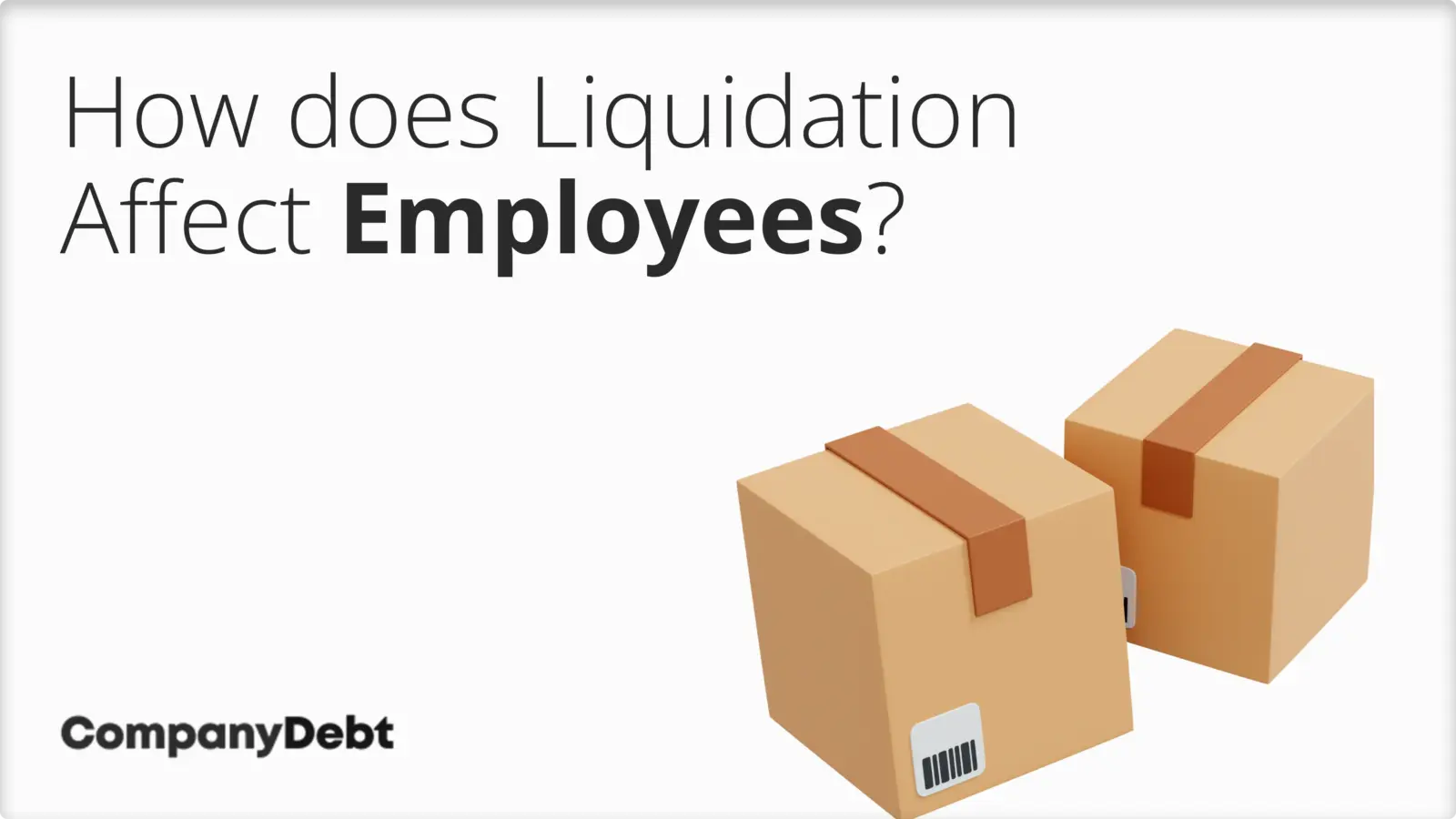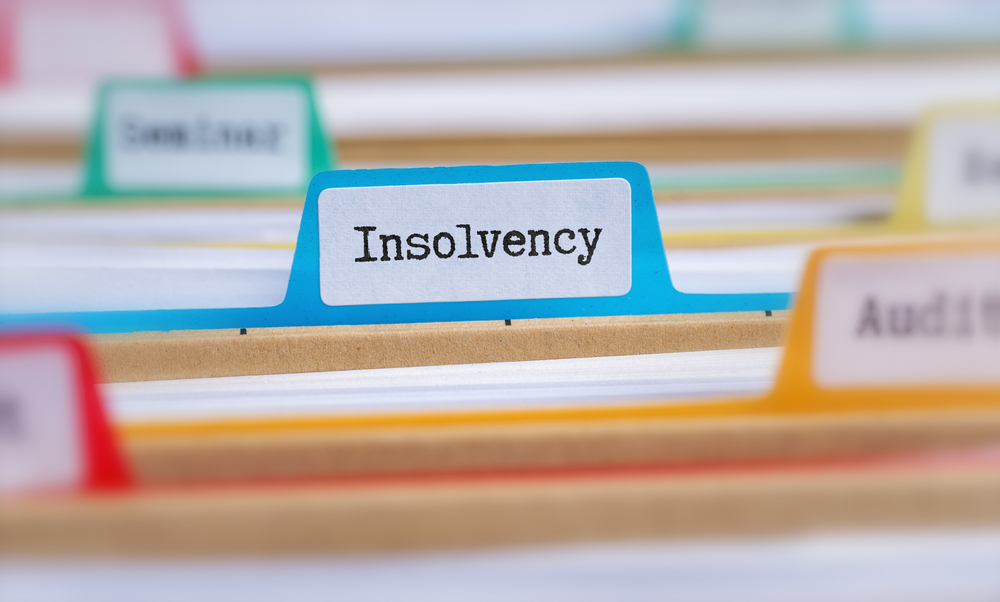
What Happens to Employees When a Company Goes Into Liquidation?
Discover how company liquidation impacts employees, including their rights and entitlements and what to expect during the process.
Immediate Impact on Employees During Liquidation
When a company enters insolvent liquidation, here’s what happens to employees[1]Trusted Source – GOV.UK – Your rights if your employer is insolvent:
- All employees are automatically made redundant when the liquidator is appointed.
- The company stops all salary payments. Any unpaid wages become a claim in the liquidation.
- You become a creditor for any money owed to you (wages, holiday pay, etc.).
- Some of what you’re owed (like recent unpaid wages) are treated as a higher priority for payment than other debts. These are paid before other creditors, if funds are available.
- Company assets determine what you get paid: The liquidator will sell the company’s assets. How much you receive depends on how much money this raises and how much is owed to other creditors.
- A government safety net is available: If the company can’t pay, you can claim from the National Insurance Fund through the Redundancy Payments Service for certain entitlements.
- Pension contributions stop: Any ongoing pension scheme contributions from the employer cease immediately.
It’s important to note that in a solvent liquidation (Members’ Voluntary Liquidation), the process is different, with staff paid as normal until their final day. However, in insolvent liquidations, which are more common, the above scenario is typical.
What Happens Next in the Liquidation Process
After the immediate impacts outlined above, here’s what typically follows:
For directors:
- Cooperate fully with the IP throughout the process.
- Ensure all necessary documentation is provided promptly.
- Be prepared for the process to take several weeks to months.
For employees:
- Stay in communication with the IP for updates.
- Gather all relevant employment documents.
- Be prepared to submit claims as directed by the IP.
- Understand that the process from liquidation to final payments can be lengthy.

What Can Employees Claim During Liquidation?
In the event of insolvent liquidation, employees are entitled to the following from the National Insurance Fund (NIF) if the company itself cannot pay:
| Category | Details |
|---|---|
| Unpaid Wages | Up to 8 weeks, capped at £700 per week. |
| Holiday Pay | Up to 6 weeks, same cap as unpaid wages. |
| Redundancy Pay | For 2+ years service. Age-based calculation. Capped at £700 per week. Maximum 20 years considered. |
| Notice Pay | Based on length of service, up to 12 weeks, same weekly cap. |
How is Redundancy Pay Calculated?
- Half a week’s pay for each full year employed under the age of 22
- One week’s pay for each full year employed between the ages of 22-40
- One and a half week’s pay for each full year employed at the age of 41 or older
Timelines for Claims and Payments
Claim Deadlines:
- Within 6 months of dismissal: Redundancy pay and unpaid wages
- Within 12 months of insolvency: Holiday pay, notice pay, and unpaid pension contributions
Payment Processing:
- The National Insurance Fund (NIF) typically processes 80% of claims within 3-6 weeks
- Weekly payment cap: £700 (£643 if made redundant before 6 April 2024)
Additional Information:
- The Insolvency Practitioner (IP) will provide you with a case reference number for your claim.
- Claims are typically made through the Redundancy Payments Service (RPS), either online or by phone.
- Redundancy payments up to £30,000 are usually tax-free, but other payments like unpaid wages and holiday pay are taxed as normal income.
- Any amounts above the NIF limits will remain as a claim in the liquidation. The IP will keep you informed about any additional payments you might receive as the liquidation progresses.
The Role of the Insolvency Practitioner in Employee Claims
When a company enters liquidation, the appointed Insolvency Practitioner (IP) plays a crucial role in managing employee claims. Here’s what you need to know:
- The IP becomes your main point of contact. They’ll provide you with essential information, including an RP1 Factsheet explaining the Redundancy Payments Service and your unique case reference number.
- You’ll receive guidance on the claims process. The IP will explain what you can claim and how to do it, helping you navigate the paperwork and documentation required.
- The IP acts as a bridge to the Redundancy Payments Service. They ensure smooth communication between you and the RPS, facilitating the processing of your claims.
- Company assets are managed by the IP. They’ll attempt to sell these assets to pay creditors, including employees, where possible.
- You’ll get regular updates on the liquidation. The IP will keep you informed about the process and any potential for additional payments from company assets.
- An initial meeting may be held for all employees. This is your chance to understand the situation and ask any immediate questions you might have.
- Individual assistance is available. You can approach the IP with specific questions about your entitlements or the claims process at any time.
Remember, while the IP is there to help, they must remain impartial and act in the interests of all creditors, not just employees. It’s important to be proactive in seeking information if you’re unsure about anything, and to provide any requested information promptly to avoid delays in your claim.
Why Voluntary Liquidation Can Be in the Best Interests of Employees
Voluntary liquidation typically benefits employees more than compulsory liquidation. Here’s why:
In voluntary liquidation, directors choose to wind up the company, often leading to a faster process. This allows employees to claim their entitlements sooner and provides more clarity about the company’s closure.
Compulsory liquidation, initiated by a creditor, usually takes longer. The appointment of a liquidator can be delayed, which in turn postpones your ability to make claims. This extended process often leads to a longer period of uncertainty for employees.
Your entitlements remain the same in both types of liquidation.
FAQs about Employees and Company Liquidation
How does company liquidation affect my pension contributions?
The impact on your pension contributions can differ in each case, as it depends on the specific clauses and terms within the pension scheme of each company. Generally, employees’ pension funds are protected and separate from the company’s assets.
How do I file a claim for unpaid wages and benefits during company liquidation?
You should contact the appointed insolvency practitioner or liquidator to file a claim. They will provide the necessary forms and guidance on the claims process.
What happens to employee contracts during company liquidation?
Employee contracts are typically terminated when a company goes into liquidation, leading to job loss. Outstanding contractual obligations, such as notice periods, may be addressed during the liquidation process.
How long does the liquidation process typically take, and when can employees expect to receive their entitlements?
Employees can expect to receive their entitlements after the sale of company assets and the distribution of funds, which will several months at a minimum.
What should employees do if they suspect misconduct or fraud by company directors leading to liquidation?
Employees who suspect misconduct or fraud should report their concerns to the insolvency practitioner or the appropriate authorities, such as the Insolvency Service.
Can I get a reference if my employer has gone into liquidation?
Obtaining detailed references can be challenging after liquidation. The liquidator may provide basic employment verification, but character references might not be available. It’s advisable to secure references from colleagues or supervisors before the liquidation process is complete.
How can I retrieve my personal belongings from the workplace during liquidation?
You should arrange to collect your personal belongings as soon as possible after the liquidation is announced. The liquidator typically sets a deadline for this, after which unclaimed items might be disposed of or sold as part of the company’s assets. Contact the liquidator promptly to schedule a time for collection, and be prepared to provide evidence that the items belong to you personally rather than the company.
Useful Resources
Apply for money your employer owes you on GOV.UK.
Apply for statutory notice pay on GOV.UK.
Claim for redundancy and other money you’re owed by an employer
The primary sources for this article are listed below, including the relevant laws and Acts which provide their legal basis.
You can learn more about our standards for producing accurate, unbiased content in our editorial policy here.
- Trusted Source – GOV.UK – Your rights if your employer is insolvent







